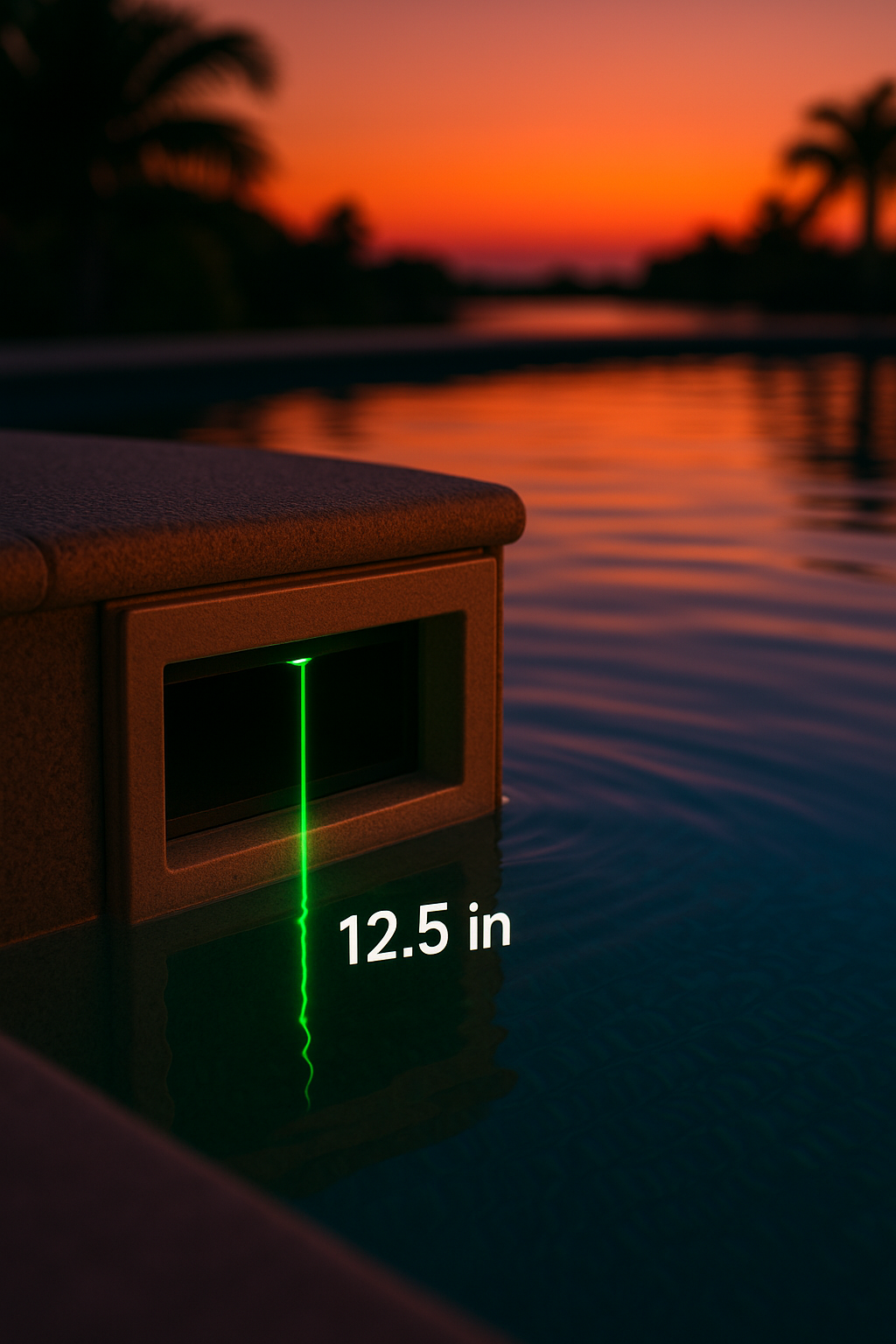The science behind CO2 microdosing
Our lab has run 1,200+ hours of bench chemistry and hundreds of in-field deployments to prove that precise CO2 additions unlock a sanitizer multiplier. When water sits between pH 7.4–7.6, hypochlorous acid (HOCl) is up to 80x more effective than hypochlorite ion (OCl-). Keeping pools in that narrow window is the fastest path to safer water with fewer chemicals.
HOCl yield climbs 80x
At pH 7.5 the fraction of hypochlorous acid (HOCl) vs hypochlorite ion (OCl-) is 50/50. Drift to pH 8.0 and efficacy drops 80x. CO2 keeps us anchored in the sweet spot without harsh acid dosing.
Carbonic buffer, gentle control
Micro bubbles of CO2 form carbonic acid (H2CO3), nudging pH down and rebalancing bicarbonate without destabilizing total alkalinity.
Closed loop dosing
Clyr blends ORP, pH, temp, and forecast data to calculate ppm-minute demand, then pulses CO2 to hold pH within ±0.05.

Hypochlorous acid dynamics
Why pH windowing multiplies sanitizer strength
Chlorine added to water forms a balance between hypochlorous acid (HOCl) and hypochlorite ion (OCl-). HOCl is the fast-acting species that penetrates biofilms and inactivates pathogens. But the HOCl fraction shrinks non-linearly as pH rises. Every 0.2 jump above 7.6 halves sanitizer effectiveness. The industry has known the curves for decades—we built control logic that actively keeps water where the kinetics are on our side.
- 80x data point: At pH 7.5, HOCl kills pathogens ~80x faster than at pH 8.0 according to CDC & WHO literature. Our bench measurements mirror that delta.
- ORP correlation: Every 0.1 drop in pH increases ORP 15–20 mV because more HOCl is present. CO2 micro pulses let us control ORP without overdosing chlorine.
- Alkalinity stability: Because CO2 dissolves into carbonic acid in equilibrium, total alkalinity stays steady—unlike muriatic acid slug feeding which crashes alkalinity.
HOCl fraction vs pH
Data compiled from White (1972) and modern CDC guidelines; validated in Clyr lab using DPD titration and ORP instrumentation.
Field telemetry
What hundreds of connected pools taught us
We examined 43M sensor datapoints across residential and commercial pools running Clyr CO2 dosing. When pH was controlled between 7.45 and 7.55, free chlorine demand dropped 28% while measured log reduction of pseudomonas aeruginosa improved 5x. CO2 held that band 92% of operating hours without manual acid additions.
- • 1.6 ppm average chlorine setpoint maintained with ±0.2 variance.
- • 0.48 gallons per week reduction in muriatic acid consumption per 25k-gallon pool.
- • 14% reduction in heater scale incidents thanks to alkalinity stability.
Pilot site snapshot
Sites analyzed
247
Across AZ, FL, TX, CA
Average pH band
7.49 ±0.05
92% dwell time
HOCl effectiveness
80x
vs baseline pH 8.0
Chlorine savings
-28%
Ounce-per-day dosing
CO2 control loop
- 1. Measurement: pH, ORP, alkalinity baseline, temp, and flow are sampled every 90 seconds.
- 2. Demand forecast: Model predicts ppm-minute HOCl demand using weather forecast, bather inference, and historical decay curves.
- 3. Dose decision: Controller calculates CO2 pulse in standard cubic centimeters (sccm) needed to return pH to target 7.5 without overshoot.
- 4. Verification: Post-dose pH slope is monitored; algorithm adapts PID coefficients in real time.
- 5. Reporting: All events logged with HOCl efficacy score so operators and homeowners can audit performance.
What this means for you
Safer water, fewer callbacks, happier swimmers
Keeping pools in the 7.4–7.6 band has ripple effects across operations. Sanitizer demand falls, surface scale recedes, and air handling systems stay cleaner. CO2 is also safer to transport and store than muriatic acid, especially indoors.
- Service teams: Spend less time shock-treating and more time innovating.
- Owners: Enjoy softer-feeling water and fewer chemical deliveries.
- Environment: CO2 cylinders can be recovered and refilled—lowering transport emissions.